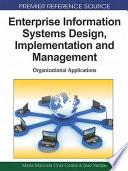
Improving Advertisement Efficiency with Information Systems Design
This report has been created to successfully analyse a business problem and create the idea for an information system solution to that problem. The business problem chosen is that advertising for businesses is currently ineffective and could be improved thoroughly. Interactive advertising can successfully improve business advertising and therefore the design of ContAD was created. The idea of ContAD was created for users to connect with the content of business advertisements. ContAD is an interactive advertisement system consisting of a variety of interactive advertising nodes, demonstrated by Figure 5. The advertising nodes are a user-friendly and interactive way of allowing customers to view and search through store deals and advertisements. The interactive advertising nodes consist of a touch screen that provides advertisements of the nearby shop deals. If a user likes a deal the advertising node can provide the user with a direct map to the store, and similar stores on that route. The system is needed because it will successfully improve the business problem that is ineffective advertising. Throughout this report a number of areas will be covered consisting of: the different types of methodologies but more specifically the chosen waterfall methdology. The design of the project, the team member roles and the project and team dynamics. The information system, the theory regarding the need for the system, the basic idea of the system, the conceptual design of the system and finally a user guide for the system.
- ISBN 13 : 364091368X
- ISBN 10 : 9783640913688
- Judul : Improving Advertisement Efficiency with Information Systems Design
- Pengarang : M. Riechert, A. Alredainy, J. Beierer, M. Christoffels, T. Falconer,
- Kategori : Computers
- Penerbit : GRIN Verlag
- Bahasa : en
- Tahun : 2011
- Halaman : 40
- Halaman : 40
- Google Book : http://books.google.com/books?id=-ZEKc-dTeY0C&dq=intitle:information+system+design&hl=&source=gbs_api
-
Ketersediaan :
This report has been created to successfully analyse a business problem and create the idea for an information system solution to that problem.









